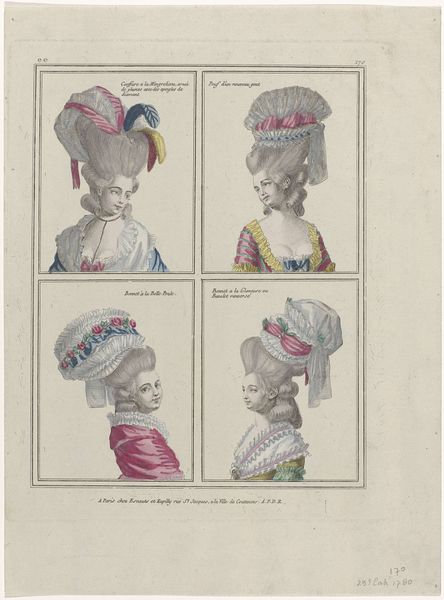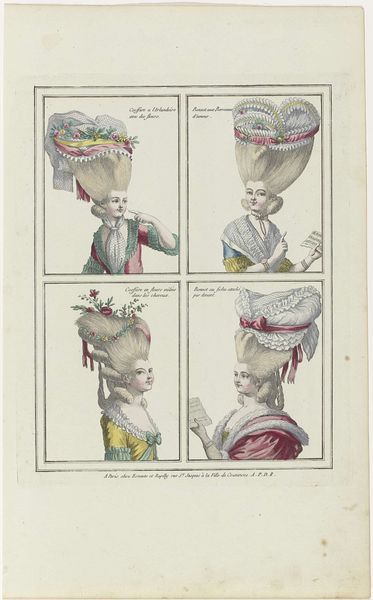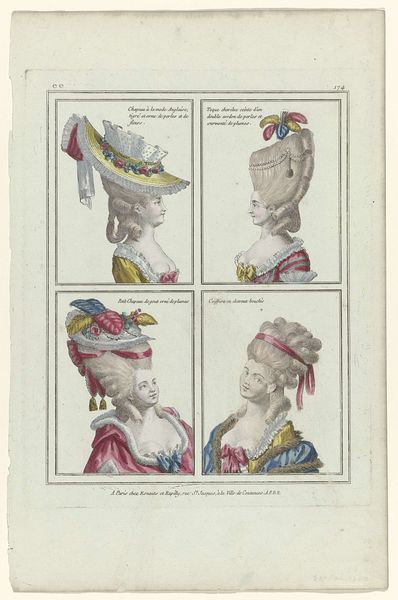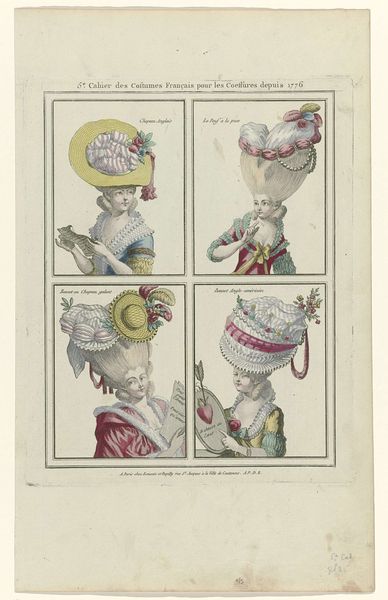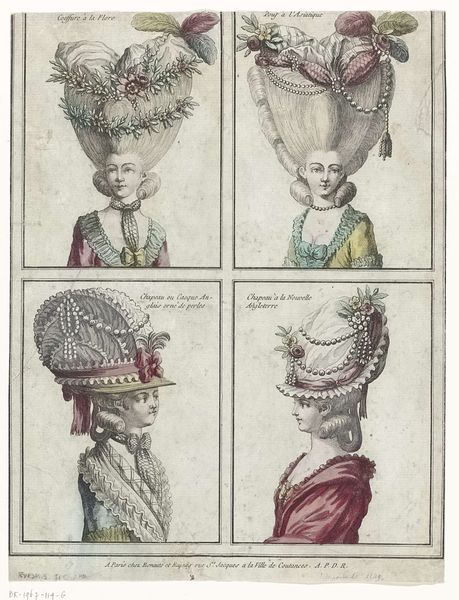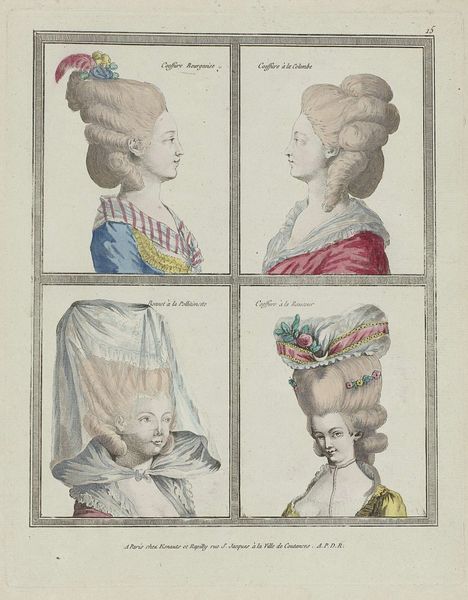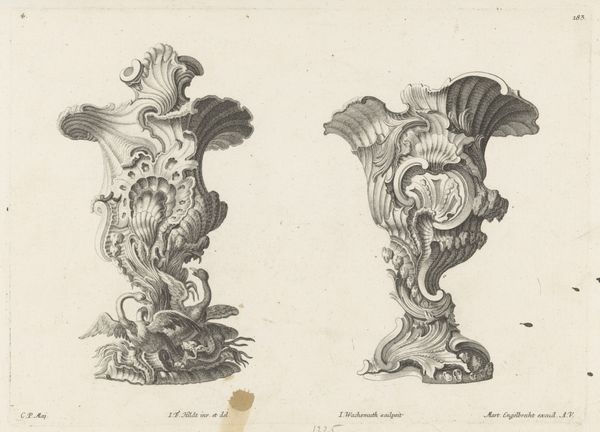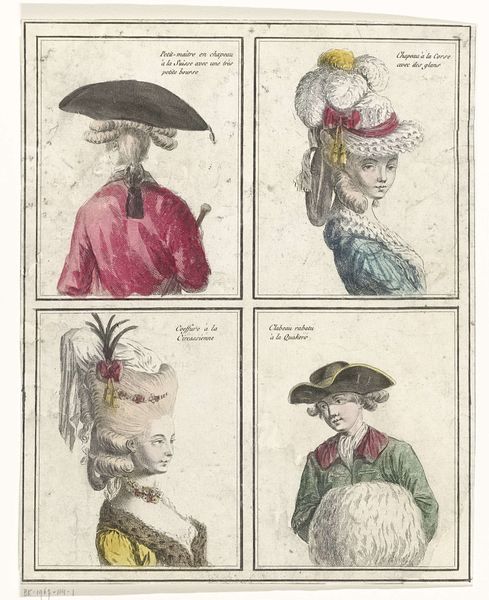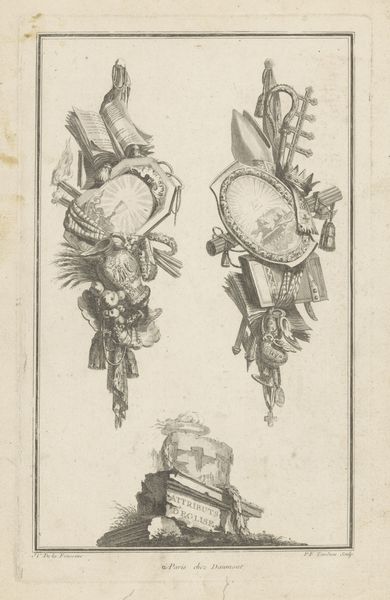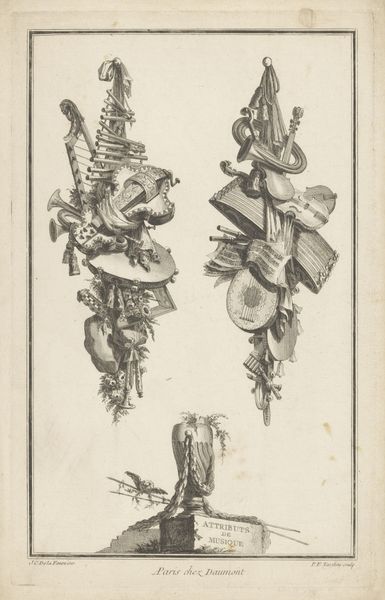
Coiffures, Poufs, Hats and Bonnets: Eleven Coiffures and Headdresses c. 1778
anonymous
Rijksmuseum
Dimensions: height 274 mm, width 222 mm
Copyright: Rijks Museum: Open Domain
Curator: This print, dating back to about 1778, showcases "Coiffures, Poufs, Hats and Bonnets: Eleven Coiffures and Headdresses." The anonymous artist worked with ink and watercolor on paper, and it now resides at the Rijksmuseum. What strikes you first about this artwork? Editor: Wow, okay, first thought? This feels like Marie Antoinette’s mood board for world domination... via hairstyling! I mean, a ship on your head? That’s next level. It’s playfully absurd! Curator: Indeed. We are witnessing the culmination of Rococo fashion here. These elaborate hairstyles became potent symbols of aristocratic identity. Consider the economic implications – the resources needed, the labor… it signifies a clear divide. Editor: You’re right, it’s excess as art, privilege shouting from the rooftops—or rather, sprouting from the scalp! Each coiffure is like its own ecosystem of fabric, feathers and fluff. Talk about a ‘statement piece.’ Curator: Absolutely, and that statement speaks volumes about societal structures. Hair, historically, has always been a contested site, haven’t you noticed? Its cultural significance is inextricably linked to questions of power, gender, and class. This print illuminates just how literally those power dynamics were embodied during this time. Editor: It makes you wonder, how heavy were these things? Did they have to strengthen their necks at the gym? Did birds ever try to nest in them? I'm being silly, but it begs the question of comfort versus performativity in fashion. Curator: Precisely, comfort was sacrificed for visibility. Think about how women were literally carrying these towering constructions – reinforcing societal expectations of women performing beauty and status. It makes one wonder who decided how to carry those power relations through adornment. Editor: It's fascinating. Today, we "wear" our politics and identities more subtly (or sometimes, not!), but back then it was quite literally elevated! Makes you think about the constant evolution of self-expression, and the price – literally and figuratively – we're willing to pay. Curator: Ultimately, what seems absurd on the surface, gives us invaluable insight into the past. It is like the styles are vessels which channel stories, culture and ideologies for future generation to find in art. Editor: Very nicely put. A wearable vessel; I think I need that on a t-shirt! Thanks for pointing out the profound stories embedded in something that, initially, just looks like delightfully weird hair.
Comments
Ladies’ hairstyles were ingenious works of art, built around a core of cushions and horsehair. Hair was piled high in curls and twists (chignons) and adorned with feathers, ribbons, artificial flowers, tulle and jewels to create various fancifully named poufs. Because the hair was dressed using animal fat and powdered with wheat flour, these poufs attracted all manner of insects. Far from hygienic, they moreover did not last long. When they went out, ladies protected their hairdos with a voluminous ribbed hood called a calèche 1. Hairdressers of the time, who styled themselves as artists, used prints to advertise their latest creations and craftsmanship 2 3.
Join the conversation
Join millions of artists and users on Artera today and experience the ultimate creative platform.
